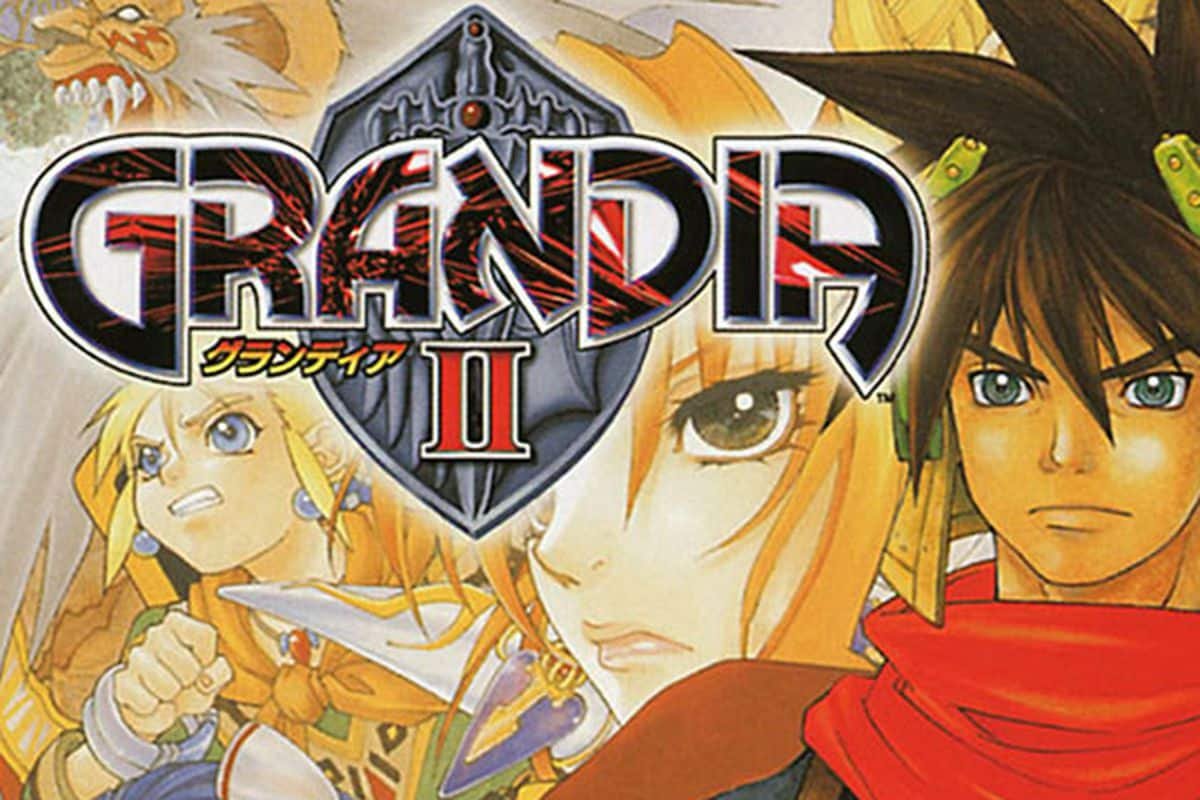But wait, you might be thinking, why are we celebrating the anniversary of Grandia II, a game that was released over two decades ago? Well, fellow gamers, allow us to enlighten you.
Grandia II, the iconic JRPG that stole our hearts back in 2000, continues to captivate us to this day. With its compelling story, innovative gameplay, and unforgettable characters, this game has left an enduring legacy in the world of JRPGs.
So join us as we dive into the world of Grandia II and celebrate its timeless greatness.
Table of Contents
Key Takeaways
- Grandia II was released in 2000 and has since been ported to various platforms, including the PlayStation and the Switch.
- The game features a storyline centered around the protagonist Ryudo and his mission to collect the pieces of Valmar’s body with the help of Elena.
- The gameplay includes a timeline-based combat system, requiring players to strategically manage their party, MP, and SP.
- Despite its slightly dated graphics and localization, Grandia II has received positive reviews and is considered a classic RPG with an influential combat system and a highly regarded soundtrack.
Release and Remasters
Grandia II has seen multiple releases and remasters since its initial launch in 2000. This beloved RPG was originally released for the Sega Dreamcast, but it has since been ported to various platforms, including the PlayStation and the Switch.
One notable release is the remastered version of Grandia II, which includes the first two games in the series. This year, the game’s anniversary is being celebrated, reminding players of its status as a classic RPG from the early 2000s.
The multiple releases and remasters of Grandia II have allowed fans to experience the game on different consoles, ensuring its availability to a wider audience. With each release, the game’s charm and gameplay continue to captivate players, making it a timeless gem in the RPG genre.
Story and Characters
Continuing from the previous subtopic on the release and remasters of Grandia II, let’s now delve into the captivating story and intriguing characters of this iconic RPG.
- Players control Ryudo, a mercenary known as a Geohound, who’s hired to accompany a group of young women, including Elena, on a mission trip.
- Elena possesses a piece of Valmar, the dark god opposing Lord Granas, and together, Ryudo and Elena go on a mission to collect the pieces of Valmar’s body.
The characters and story embrace RPG tropes and have solid characterization. The game’s story unfolds with twists and turns, exploring themes of redemption, sacrifice, and the power of friendship.
Grandia II’s story and characters are the heart and soul of the game, drawing players into a world filled with adventure and emotion. The relationships between the characters evolve and grow, keeping players invested in their journey. With its engaging narrative and well-developed characters, Grandia II stands as a testament to the power of storytelling in RPGs.
Gameplay and Combat of Grandia II
Let’s dive into the gameplay and combat of this iconic RPG as we explore the mechanics and strategies that make Grandia II a captivating experience.
Grandia II features a timeline-based combat system that adds a layer of strategy to battles. Players can time their attacks using a movement gauge, allowing for precise and satisfying combat.
Characters can perform basic attacks, critical attacks, skills, and spells, each with its own unique effects and animations. The strength of the spell or ability affects the charging time, adding a strategic element to decision-making.
To succeed in combat, players must carefully manage their party’s resources, including MP and SP. This combination of timing-based combat and strategic resource management makes Grandia II’s gameplay both engaging and rewarding.
Graphics and Localization
With regards to the graphics and localization of Grandia II, we can observe certain aspects that contribute to its charm and nostalgia.
- The character models in Grandia II haven’t aged well, lacking the timeless 2D sprite styles or photorealism that some other games from the same era possess.
- However, the game’s menus and fonts have a vintage feel, adding to the sense of nostalgia for players who experienced the game in its original release.
- The localization of Grandia II has some slightly problematic language, which can be attributed to the time period in which the game was translated.
- Despite these flaws, the graphics and localization of Grandia II still manage to contribute to the game’s overall charm and nostalgic appeal, reminding players of the classic RPGs from the early 2000s.
Reception and Legacy
Building upon the previous discussion of the graphics and localization of Grandia II, we can now delve into the reception and legacy of this iconic RPG.
Released in 2000 for the Sega Dreamcast, Grandia II received positive reviews and is considered a high point in the series. Its combat system, featuring a timeline-based mechanic, has become influential in the genre. The game also boasts a memorable soundtrack by Noriyuki Iwadare.
Additionally, the voice acting, performed by iconic actors from before the era of social media personas, adds to the game’s charm. However, it’s important to note that the graphics and localization, while contributing to the game’s nostalgia, may not be appreciated by newcomers.
Influential Combat System
Continuing our exploration of Grandia II’s reception and legacy, let’s now delve into its influential combat system.
- Timeline-based combat: Grandia II introduced a unique timeline-based combat system that revolutionized the RPG genre. The system allowed players to time their attacks using a movement gauge, adding a layer of strategy and skill to battles.
- Attack variety: In Grandia II, characters had the ability to perform basic attacks, critical attacks, skills, and spells. The strength of the spell or ability affected the charging time, requiring players to carefully manage their resources and plan their moves accordingly.
- Strategic management: Successful combat in Grandia II required strategic management of the party, including the allocation of MP (magic points) and SP (special points). Players had to make tactical decisions on when to use powerful spells or abilities, balancing offense and defense.
- Engaging gameplay: The influential combat system of Grandia II provided an engaging and dynamic gameplay experience, setting a benchmark for future RPGs. Its combination of timing-based mechanics, attack variety, and strategic management made battles a thrilling and strategic affair.
Iconic Voice Acting
Moving on to the next aspect of Grandia II’s reception and legacy, let’s now explore the game’s iconic voice acting.
Grandia II is renowned for its exceptional voice acting, which adds depth and emotion to the game’s characters and story. The voice actors bring the dialogues to life, creating a more immersive experience for players. The talented cast includes renowned actors from the era, who deliver their lines with skill and conviction.
Their performances enhance the game’s narrative, helping players connect with the characters on a deeper level. The voice acting in Grandia II is often praised for its quality and has become an integral part of the game’s legacy, contributing to its enduring popularity among fans of the genre.
Highly Regarded Soundtrack
The highly regarded soundtrack of Grandia II adds another layer of immersion and emotion to the iconic RPG experience. With its memorable melodies and captivating compositions, the game’s music enhances the player’s journey through its fantastical world. Here are some reasons why the soundtrack is highly regarded:
- Memorable Themes: The soundtrack features a collection of memorable themes that perfectly capture the mood and atmosphere of each location and situation in the game.
- Emotional Impact: The music evokes a wide range of emotions, from excitement during intense battles to melancholy during poignant moments, further deepening the player’s connection to the story and characters.
- Epic Orchestration: The grand orchestral arrangements create a sense of epicness, amplifying the scale and scope of the game’s world and adventures.
- Musical Diversity: The soundtrack incorporates a diverse range of musical styles, from sweeping orchestral pieces to catchy and upbeat tunes, ensuring that there’s something for everyone’s musical tastes.




